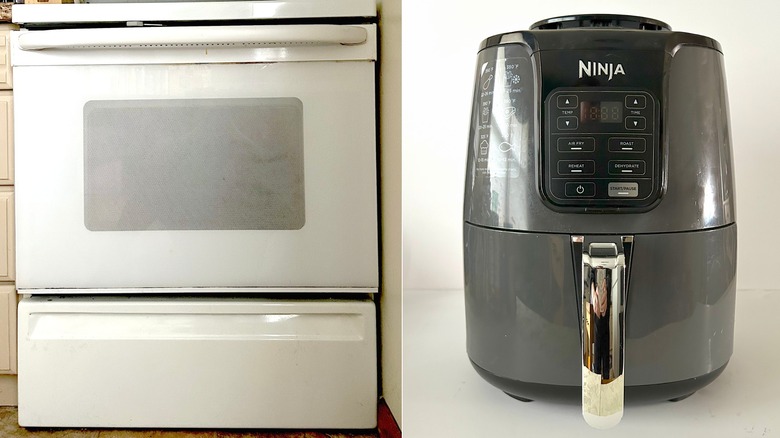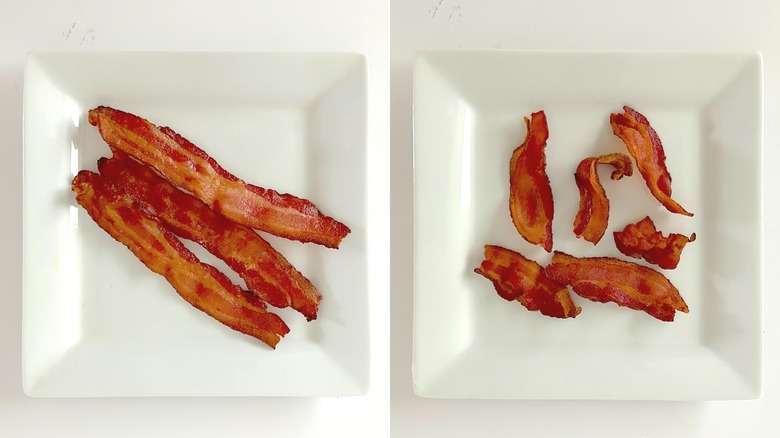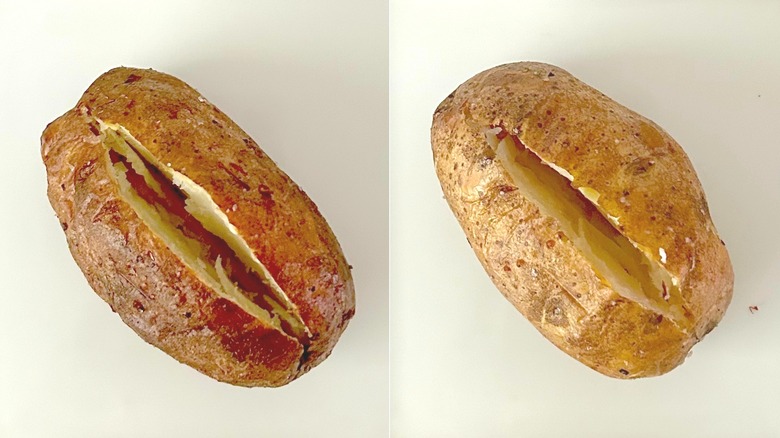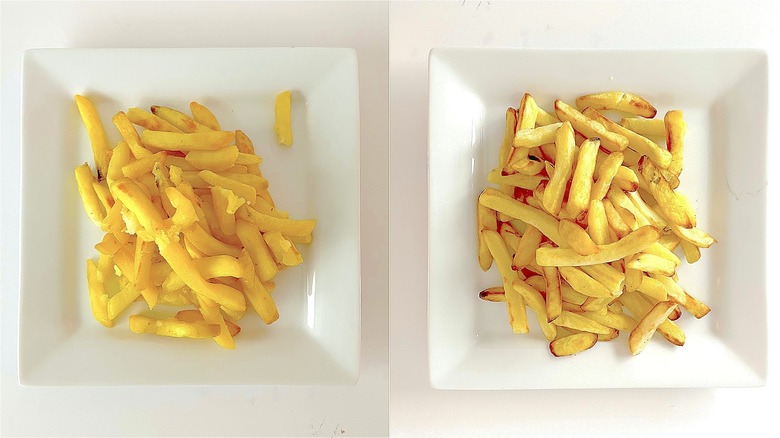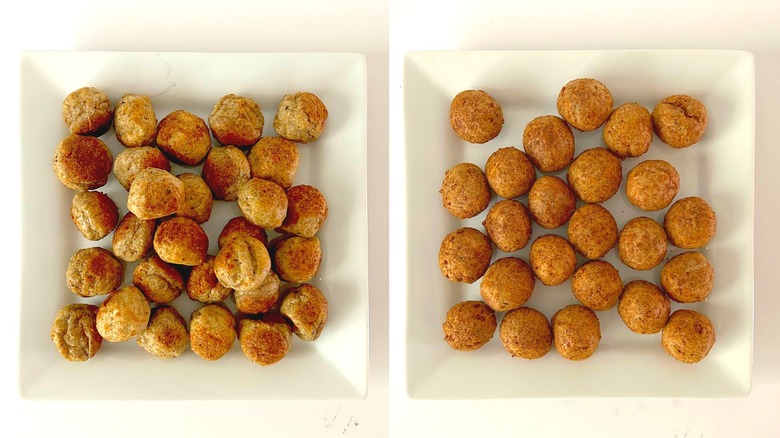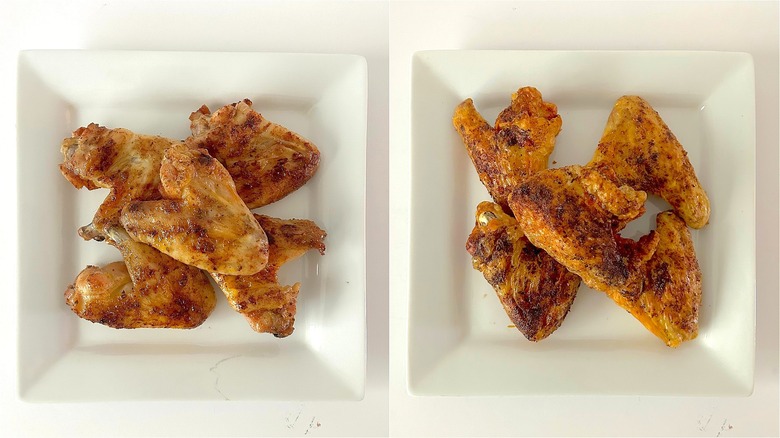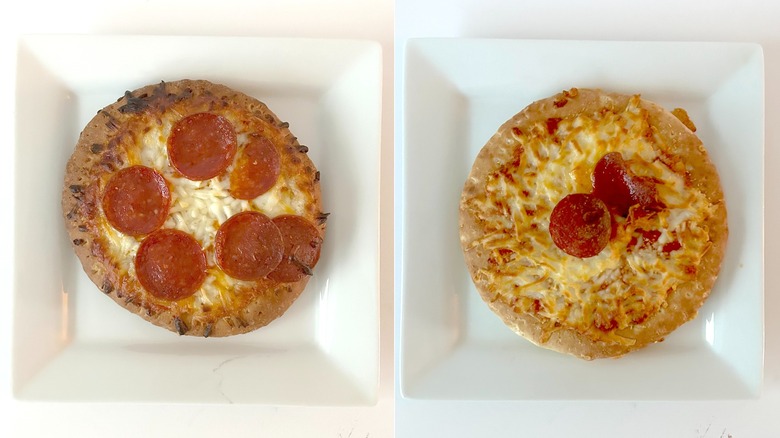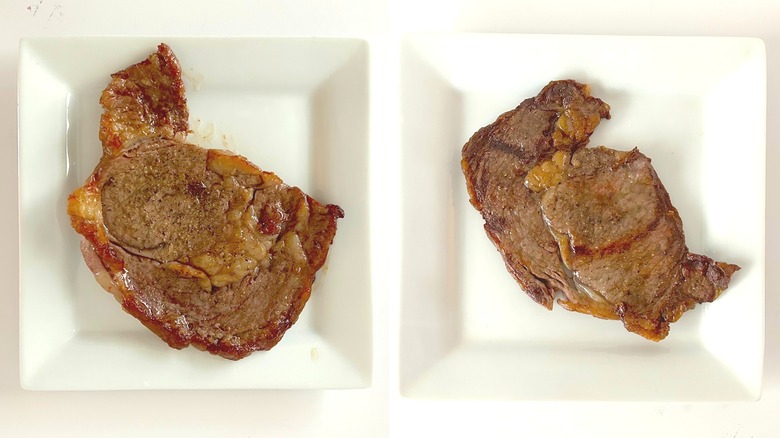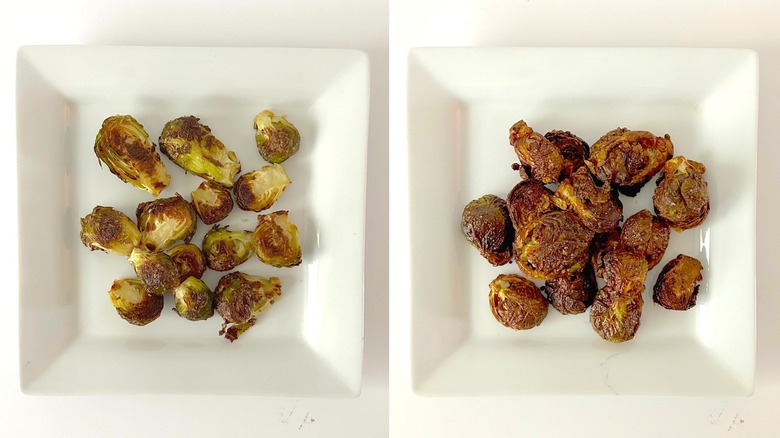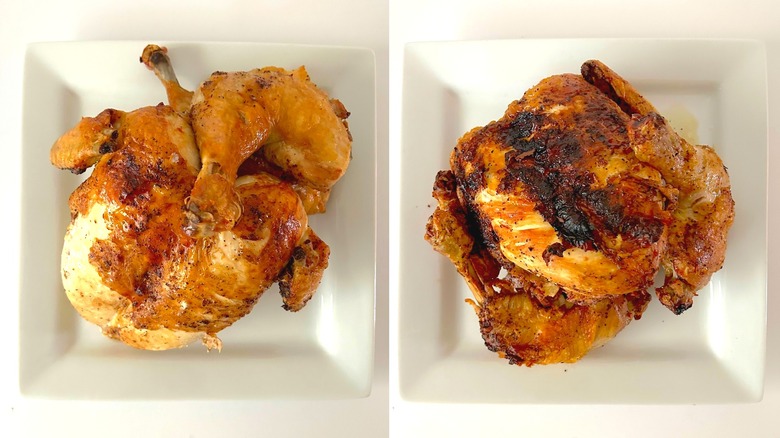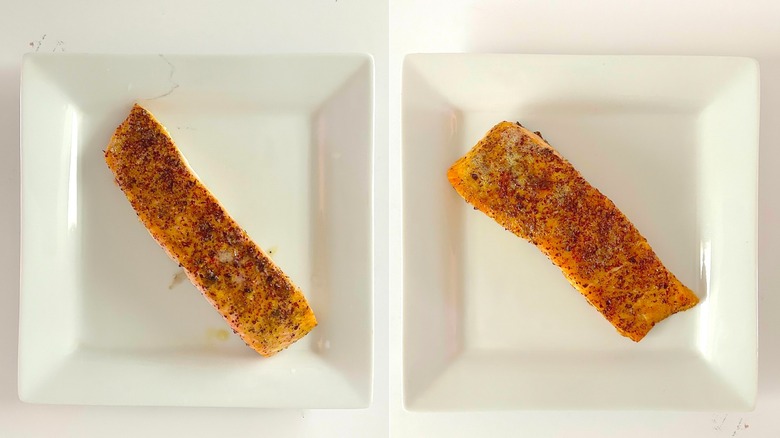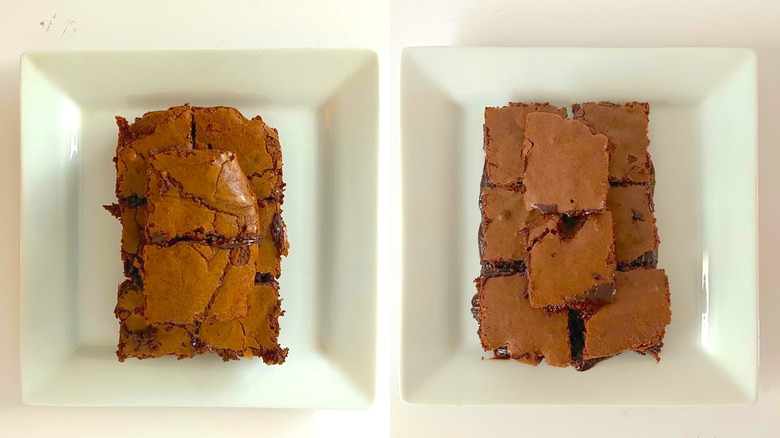Oven Vs Air Fryer: Which Appliance Is Better For Cooking These 11 Popular Foods?
As a professional chef, I often field questions about cookware and various types of kitchen gadgets. People want to know what I use and why, to help them gauge their purchasing decisions. Among the appliances I get the most curiosity about is the air fryer. Everyone wants me to tell them if they should give up valuable kitchen real estate for one, which is a legitimate question when you consider how much space these units can take up on your countertop or in your pantry.
In an effort to help illustrate the pros and cons of owning an air fryer, I thought it would be fascinating to put one to the ultimate taste test. I prepared several popular foods in both an air fryer and the oven, cooking them side-by-side to determine once and for all which appliance works best. While there wasn't an outright winner across the board, there were some interesting findings and some commonalities that may influence your decision-making when it comes to whether or not to invest in an air fryer. Read on for the full scoop.
1. Bacon: oven
My go-to method for cooking bacon is in the oven atop an aluminum foil-lined baking sheet. This is the best way to obtain bacon that is not only perfectly crisp, but remains flat when cooked. It also makes for easy clean-up, something that is notoriously problematic when cooking bacon. Though I was eager to cook bacon in the air fryer, I was also skeptical.
My primary issue with the air fryer was that you cannot fit a whole slice of bacon into a basic unit; the slices have to be cut in half to fit. A second issue I discovered was that the bacon halves were easily blown around in the unit, causing them to curl up rather than stay flat. I had to stop every couple of minutes to retrieve each piece and lay it back down again, which is somewhat inconvenient, though not a deal breaker, considering you also have to rotate the bacon in the oven so that it cooks evenly.
The air fryer bacon took roughly half the time to cook than the batch in the oven, and was equally crisp and flavorful. The air fryer bacon also ended up being less greasy, but this is easily remedied by allowing the oven-cooked bacon to drain on paper towels before consuming it. I give the edge to the oven, strictly because I like to serve whole slices of bacon and don't want to fuss with making it in that many batches to feed a crowd.
2. Baked potato: air fryer
Full disclosure: I had already tested making a baked potato in an oven versus the air fryer when I assessed various celebrity chef recipes for making them. Though I had a good idea of what to expect going into this taste test, I remained open-minded, wondering if my findings would be different in any way.
I prepared the potatoes identically for both appliances, drizzling them with a touch of olive oil and seasoning lightly with salt and pepper. While there are a number of ways to bake a potato in the oven, I place it directly onto the oven rack, which allows for air to circulate around it, much the way it does in the air fryer. Both the oven and air fryer were set at 400 degrees F and I rotated the potatoes at the 30-minute mark. Though the air fryer potato was ready in 50 minutes, the oven only took about an hour, not a notable time difference.
When it comes to baking a potato, the edge goes to the air fryer, but just barely. Both potatoes were tender and creamy on the inside and crisp on the exterior. The only reason I prefer the air fryer is because the skin takes on a golden brown hue and a firmness that I prefer over the oven-baked potato, particularly because I always eat the skins. This may be more of a personal preference, though, not a definitive advantage.
3. French fries: air fryer
French fries are one of those foods that I always keep in the freezer for a quick, easy weeknight meal. While baking them in the oven is the traditional method for preparing them, I am typically underwhelmed with the texture of these fries. They tend to get somewhat soggy and rip apart, even if you drizzle them with oil, which can make them quite greasy. For this reason, I was excited to test cooking them in an air fryer.
Regardless of whether you use the oven or the air fryer, one key to cooking frozen french fries is to make sure they are spread out in a single layer on the baking sheet or the air fryer basket. This ensures they cook evenly and that they don't steam, which inhibits the Maillard reaction from occurring. Another key is to toss the fries halfway through the cooking process, to guarantee that they do not stick and that they crisp up uniformly.
This taste test had a definitive winner: the air fryer. There is no doubt that the even circulation of air in the air fryer creates crispy, lightly browned fries that have a marvelous texture and more toasty flavor. They also cook up in a flash compared with the oven-baked fries. They were done in roughly 10 minutes, versus 20 for the oven-baked ones.
4. Meatballs: oven
Whether you make meatballs from scratch or purchase frozen ones, there are a number of ways to cook them to obtain a delightful brown exterior and moist interior, from pan searing them to braising them in tomato sauce. For the sake of this experiment, I purchased pre-made, frozen meatballs and reheated them both in the oven and the air fryer. I expected the results to be somewhat different than what actually occurred.
Similarly to the frozen french fries, the key to reheating frozen meatballs is to spread them out in a single layer on the baking sheet or the air fryer basket so that plenty of air can circulate around them, which allows them to brown rather than steam. It is also a good idea to rotate them halfway through the cooking process to guarantee even cooking.
The advantage to the air fryer was time, as the meatballs were done in just under 10 minutes. When baked, they took roughly 25 minutes. That said, I found the air fryer meatballs became a little too crisp and their centers were a little dried out, lacking in the juiciness that was retained by the oven-baked ones. Though the oven-baked meatballs didn't have an evenly browned crust, they had a nice snap to them. In this case, the oven was the clear winner, though I suspect the results may have been more favorable to the air fryer with meatballs made from scratch.
5. Chicken wings: air fryer
Chicken wings are my favorite game day snacks. While I love them fried, the added fat can make them greasy. For this reason I often bake them, tossing them in spicy buffalo sauce once they are done. The problem with making wings in the oven is that they take a lot of time and tend to lack the crisp skin that makes them so finger licking good.
While I suspected the air fryer would solve my chicken wing woes, I did not anticipate it doing so with such success. Before cooking them, I removed the tips of the wings using kitchen shears. Rather than separating the drummettes from the wingettes, I left the wing intact for a more substantial portion-size. After patting the wings dry with paper towels, I air-chilled them in the refrigerator for about an hour. After seasoning them, I tossed half of the wings into the oven and the rest into the air fryer basket, taking care not to crowd them together. I rotated the wings a couple of times during the cooking process to ensure even browning.
The air fryer took just shy of 30 minutes to cook the wings, a marked improvement over the oven. Where the air fryer really excelled was in producing an impossibly crispy skin, akin to what you might get by frying the wings, but without the messy grease. The meat itself was moist, juicy, and flavorful. I'll never go back to making wings any other way.
6. Frozen pizza: tie
Frozen pizza is another convenience food that many of us rely on for a busy weeknight meal. Many brands of frozen pizza now come with instructions for various ways to reheat them, including detailed specs for using both the oven and the air fryer. The personal pan-sized pizzas I obtained were no exception to this rule. For the sake of a fair comparison, I followed the instructions on the packaging to the letter, which suggested microwaving the pizza for about a minute and a half before popping it into the air fryer.
Once the pizzas went into the oven and air fryer, respectively, they took roughly 20 minutes versus 8 minutes to cook, making the air fryer a clear winner in the time department. The problem I encountered with the air fryer was that the circulating air within the unit blew the slices of pepperoni off of the pizza, leaving it naked. This may not be an issue with more substantial toppings that are less lightweight, but it was a huge bummer when it came to this pizza. I also felt that the recommendation to microwave it first left the interior slightly soggy, compared with the pie that was fully baked in the oven. That said, I'm not ready to declare the oven the hands down winner. I have a sneaking suspicion that with a different pizza brand, the results might be a little more favorable for the air fryer.
7. Steak: air fryer
While baking is not my go-to method for making a perfectly medium-rare steak, broiling can be a great way to cook a thicker cut of beef. That said, the air fryer has its advantages, particularly when you consider that it is basically the equivalent of a mini convection oven. The consistent and uniform circulation of air around the meat allows for the Maillard reaction to occur, creating a delectable crust with a juicy interior.
There are some tips and tricks to follow to ensure the best results when using an air fryer to cook a steak. Among these are some beef basics that apply regardless of the cooking method used, including making sure the meat is completely dry and seasoning it liberally with salt. I followed these before popping one steak in the oven and the other into the air fryer.
In this case, the steaks were done in roughly the same amount of time, though there was a notable difference in the color and crispness of the steak cooked in the air fryer. While both steaks remained juicy, the air fryer had a decidedly more robust flavor thanks to that browning that is encouraged by the air circulation. My only regret is that I didn't purchase thicker steaks. I used ribeyes that were ½ inch thick, which made it challenging to obtain a medium-rare doneness. That said, I'd give the edge to the air fryer over the oven when it comes to cooking a steak.
8. Brussels sprouts: tie
I recall disliking Brussels sprouts with a passion as a child. I viewed them as overcooked miniature cabbages that left a lot to be desired. It wasn't until I became a professional chef and discovered the virtues of the Maillard reaction for transforming vegetables into something truly revolutionary, that I fell in love with this cruciferous vegetable.
When I am not cooking Brussels sprouts in copious quantities of bacon, I am generally roasting them, seasoned gently in olive oil, salt, pepper, and some nutmeg. This is the approach I took this time around, placing half of them into the oven and the other half in the air fryer. What I wasn't banking on was how rapidly the air fryer would cook them. Within roughly 10 minutes, they were on the overly crisp side, though still edible. If I was a little more discerning I would have removed them from the air fryer at around the 8-minute mark to give them just a bit more texture.
That said, I could see the virtues of using the air fryer, particularly if you appreciate fried vegetables, which I do. While the oven took about double the amount of time, the result was consistent with what I am accustomed to. The sprouts were tender, had just begun to caramelize, and the seasoning was easily detectable. Though I am not prepared to declare a winner in this taste test, I do think the oven was a little easier to control.
9. Roast chicken: air fryer
Among the recipes I was most eager to try in the air fryer was roasting a whole chicken. Few things are as satisfying as a succulent roasted chicken straight out of the oven. That said, cooking one in the oven can take quite a while and getting it just right — so that the skin remains crisp and the meat moist — is something that requires some trial and error.
I knew that if I could make a chicken in an air fryer in less time that had all the attributes of an oven-roasted chicken, this would be a game changer. The one hitch in the giddy up was the size of a whole chicken. There is no way a trussed, whole chicken will fit in an average-sized air fryer. For this reason I spatchcocked it, removing the backbone and trimming the wing tips. This enabled me to fit it into the air fryer basket, albeit rather snugly, after patting the chicken dry, air-chilling it in the refrigerator, and seasoning it.
The result was nothing short of miraculous. While the air fryer only saved me a little time over the oven, roughly 50 minutes versus just over an hour, the skin of the chicken was incredibly crisp and the meat fall-of-the-bone juicy. Though there was nothing wrong with the oven-roasted chicken, I'd opt for the air fryer any day for ease of clean-up and to enjoy that delectable, crunchy skin.
10. Salmon: air fryer
Baked salmon is an easy, healthy weeknight meal that is virtually foolproof to execute with very little preparation or fanfare. That said, there is one thing that baking doesn't achieve that is possible when a salmon filet is pan-seared — a crisp skin and a nice sear on the topside of the filet. This is what I was intent on testing for, and hopefully achieving, by using an air fryer to cook a salmon filet.
I prepared both filets identically, patting them dry and air-chilling them in the refrigerator, before drizzling them with a hint of olive oil and seasoning them. While there are some who suggest you might need to flip your salmon filet halfway through the cooking process in the air fryer, don't. It is unnecessary and may result in the salmon falling apart. Simply place the filet in the air fryer basket and in just about 12 minutes you will have perfectly cooked salmon.
The bonus: The skin on this salmon filet was nice and crisp and the top had a decent crust on it, similar to what you might achieve by pan-frying the fish. The moisture was locked into the salmon and there was an added element of nuttiness owing to the air circulation of this cooking method. While the oven-roasted salmon was equally tasty and moist, for anyone who enjoys more textural contrast, the air fryer has a distinct edge.
11. Brownies: oven
While the air fryer is capable of many things, baking may not be its greatest forté. That said, I wanted to give this appliance a chance, so I attempted to make brownies in it, understanding that this may be no easy feat to achieve. I did a certain amount of research on the subject and found a couple of suggestions that recommended lining the air fryer basket with aluminum foil to create a pseudo-pan for the brownie mix. With this knowledge, I embarked on a mission that I feared would be impossible to accomplish.
After mixing together two store-bought brownie mixes, I transferred one batch into an 8-inch round springform pan lined with aluminum foil and the other to the pre-lined air fryer basket. I set the oven and the air fryer to the appropriate temperature and waited. After about 20 minutes, the brownies in the air fryer appeared to be set, even passing the toothpick test, which came out clean. I removed the brownies and set them aside to cool while waiting for the oven-baked treats to finish, which took roughly 40 minutes.
Once cooled, I cut into both. The oven-baked brownies were perfectly moist and fudgy. The air fryer ones were a pile of goo. The top was indeed set, but underneath, the batter hadn't cooked at all, despite my promising toothpick test. Though there are from-scratch brownie recipes out there designed for the air fryer, I'm gonna stick to baking with my tried-and-true oven.
